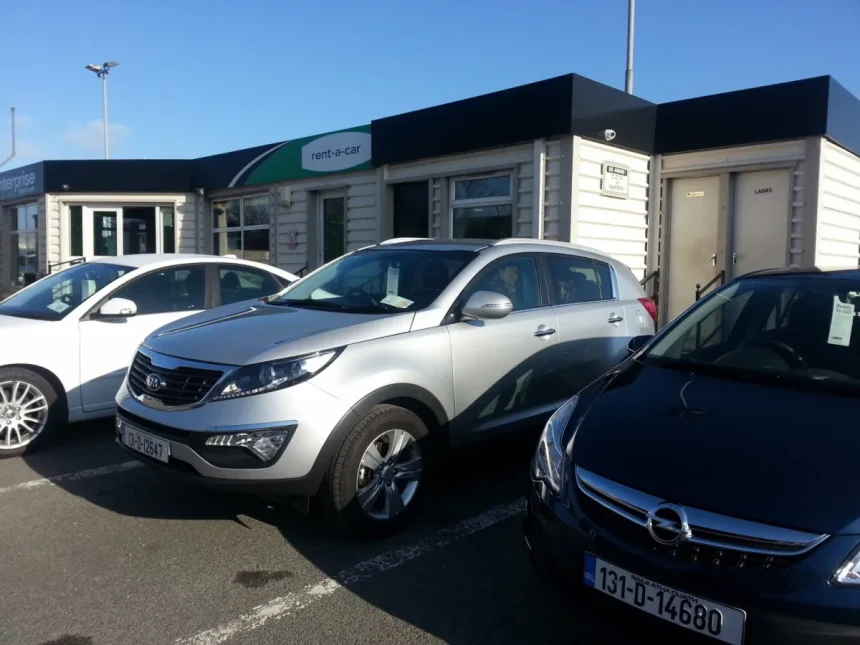Planning Your Trip to Ireland
Getting your Ireland trip right starts with good planning. First up, know the best time to visit Ireland. Late spring through early fall (May to September) offers the best weather, longer days, and lots of festivals. However, if you want to avoid crowds and save money, consider traveling in the shoulder seasons like April or October.
Next, create a realistic itinerary. Ireland has plenty to offer—from the bustling streets of Dublin to the scenic Wild Atlantic Way and Northern Ireland’s historic sites. Focus on a few key regions to avoid rushing. For example, you might spend a few days in Dublin, then head west to the Cliffs of Moher and the Dingle Peninsula, wrapping up with a visit to Galway or Belfast.
Budgeting is crucial. Ireland can be pricey, especially in tourist hotspots, so plan for accommodation, meals, transportation, and entrance fees. Staying in guesthouses or B&Bs can save money. Booking flights and accommodations well in advance usually nets better deals.
Speaking of booking tips:
- Use flexible dates to snag cheaper flights.
- Book car rentals early if you’re planning an Ireland road trip.
- Reserve popular tours or activities ahead of time, especially in peak season.
For more travel planning advice, check out travel tips for road trips, which applies well if you’re driving through Ireland’s stunning landscapes.
Getting Around Ireland Renting a Car Public Transportation Cycling
When traveling in Ireland, getting around is part of the adventure. Here are the best options for moving between cities and exploring the countryside:
Renting a Car
- Renting a car gives you the most freedom, especially if you want to drive the Wild Atlantic Way or visit remote spots like the Dingle Peninsula.
- Keep in mind that Irish drivers sit on the left side, and you’ll be driving on the left side of the road. Give yourself time to adjust.
- Roads outside cities can be narrow and winding, so drive carefully and watch for sheep or cyclists.
- Booking a rental car early often saves money, especially during peak tourist seasons.
Public Transportation
- Ireland’s buses and trains connect major cities like Dublin, Galway, and Cork with smaller towns.
- Bus Éireann and Irish Rail offer reliable, affordable service great for budget travel in Ireland.
- For Northern Ireland, Translink runs buses and trains connecting Belfast and beyond.
- Keep in mind that some rural areas have limited service, so double-check schedules before you head out.
Cycling
- If you’re up for an active trip, cycling can be a fantastic way to see Ireland’s beautiful landscapes up close.
- Many towns have bike rentals, and there are designated cycling routes on the Wild Atlantic Way and around Galway.
- Pack rain gear, as the weather can change quickly when you’re on the road.
- Cycling lets you stop at smaller villages or hidden gems that a car or bus might miss.
Overall, your choice depends on your comfort level, budget, and where you want to go. For the classic Ireland road trip experience, renting a car is unbeatable. If you’re sticking to cities or want to save money, public transportation is solid. And if you love being outdoors, cycling is a great way to explore.
Packing for Ireland’s Unpredictable Weather
When packing for Ireland, expect all kinds of weather—even in one day. Rain and wind are common, so waterproof gear is a must. Here’s what I recommend:
- Waterproof jacket and pants: A lightweight, breathable rain jacket will keep you dry without overheating.
- Layers: Pack t-shirts, long sleeves, and a warm sweater or fleece. Layering helps you stay comfortable no matter the temperature.
- Sturdy walking shoes: You’ll want waterproof and comfortable shoes for exploring cities and the Wild Atlantic Way.
- Umbrella: Useful but be prepared to stow it if the wind picks up.
- Hat and gloves: Especially if traveling in spring, fall, or winter.
Seasonal Considerations
- Summer (June to August): Milder weather but still pack layers and rain gear. Nights can be chilly.
- Fall and Spring: Expect rain and cooler temps—layers and waterproofs are crucial.
- Winter: It’s cold and wet, so bring warm clothes and a solid coat.
Cultural Tip
Irish weather talk is part of the culture—don’t be surprised if locals chat about the rain or sun. Also, dressing neatly but casually fits right in; avoid overly flashy or beachy clothes, even in summer. Comfortable and practical wins here.
Must-Visit Destinations in Ireland
When planning your Ireland itinerary, some spots stand out as absolute must-sees.
Dublin
Start with Dublin, the vibrant capital. It’s packed with history, great pubs, and landmarks like Trinity College and the Guinness Storehouse. For a real local feel, explore neighborhoods like Temple Bar and St. Stephen’s Green.
Cliffs of Moher and The Burren
No trip to Ireland is complete without visiting the Cliffs of Moher. These dramatic cliffs offer incredible views of the Atlantic Ocean. Nearby, The Burren provides a unique limestone landscape filled with rare plants and ancient ruins, perfect for hikers and nature lovers.
Dingle Peninsula
For stunning coastal drives, check out the Dingle Peninsula. It’s a less touristy spot along the Wild Atlantic Way, famous for its rugged beauty, charming villages, and local seafood.
Galway
Galway is known for its lively arts scene and friendly vibe. Walk the colorful streets, catch some live Irish music, and enjoy fresh seafood at the many eateries. It’s also a great base to explore nearby Connemara.
Northern Ireland
Don’t skip Northern Ireland. Highlights include the Giant’s Causeway—a natural wonder with unique basalt columns—and the historic city of Belfast. Northern Ireland offers a mix of scenic views, history, and culture worth adding to your route.
These destinations give you a mix of city life, nature, and Irish culture, making your Ireland road trip or public transport adventure truly memorable.
Cultural Insights and Etiquette
Understanding Irish culture is key to making the most of your trip. The Irish are known for being friendly, polite, and talkative. A smile and simple greetings like “Hello” or “Thanks” go a long way. When meeting someone new, a firm but not overpowering handshake is common. The Irish also love storytelling, so don’t be surprised if conversations turn lively and full of humor.
Tipping in Ireland
Tipping in Ireland is appreciated but not always expected. In restaurants, leaving around 10-15% is standard if service isn’t already included. For pubs, it’s common to just round up the bill or buy the bartender a drink. Taxi drivers usually get about 10% tip. For guides and hotel staff, a small tip is a nice gesture if you feel service was great.
Safety Tips
Ireland is generally very safe for travelers. Still, keep these tips in mind:
- Stay aware of your surroundings, especially in crowded tourist spots.
- Keep your valuables secure and avoid leaving bags unattended.
- When driving, remember they drive on the left side of the road.
- Follow local rules and signs, especially around natural attractions like cliffs and coastal paths.
Respecting these simple customs and safety tips will help you enjoy Ireland comfortably and confidently.
Insider Tips for a Unique Experience
To make your Ireland trip truly memorable, go beyond the usual tourist spots and dive into the hidden gems. Instead of sticking only to famous places like the Cliffs of Moher or Dublin’s city center, try exploring lesser-known villages or quiet coastal towns along the Wild Atlantic Way. These spots often offer authentic experiences without the crowds.
Food and drink are a huge part of Irish culture, so don’t miss out on local flavors. Sample traditional dishes like Irish stew, soda bread, or fresh seafood in small pubs and family-run restaurants. Trying a pint of Guinness or a glass of Irish whiskey at a local pub where the regulars hang out can give you a real taste of Ireland’s social vibe.
Connect with Ireland’s rich history by visiting some of its many castles, ancient ruins, and historical landmarks. Places like Kilkenny Castle or the Rock of Cashel offer fascinating insights into Ireland’s past. Also, consider joining guided walking tours or storytelling sessions that bring history to life.
For more travel advice that can enhance your journey, check out these road trip travel tips. They offer practical hacks that fit perfectly with an adventurous Ireland itinerary.
By embracing these insider tips, you’ll get a deeper, more genuine sense of Ireland that goes well beyond the traditional travel guide.








